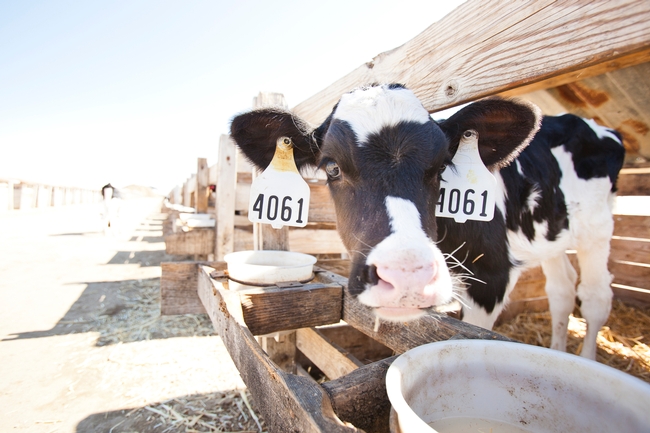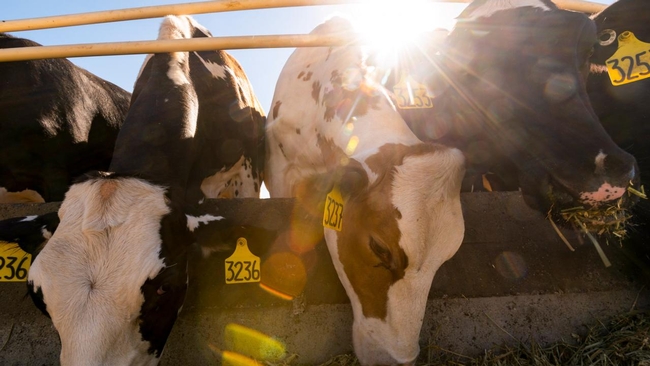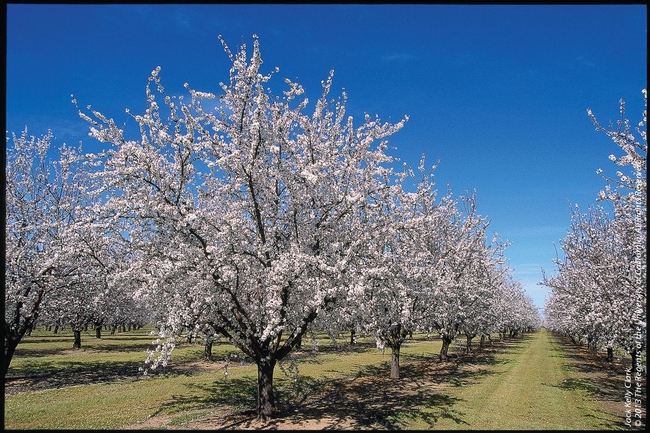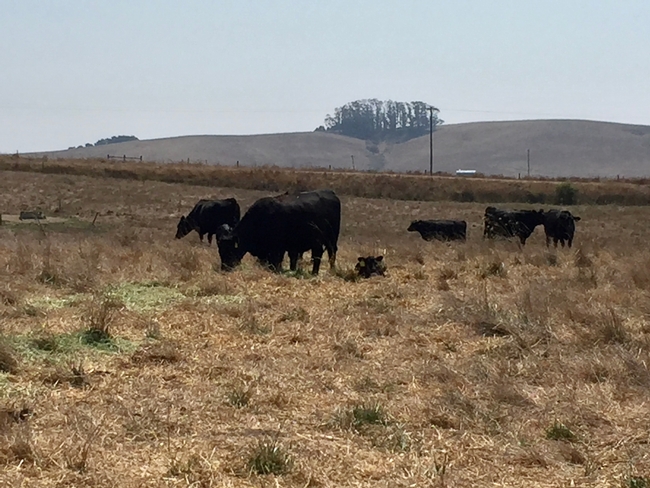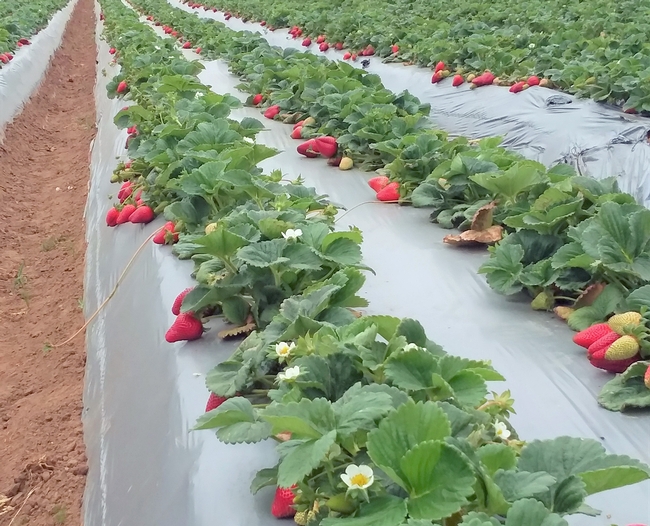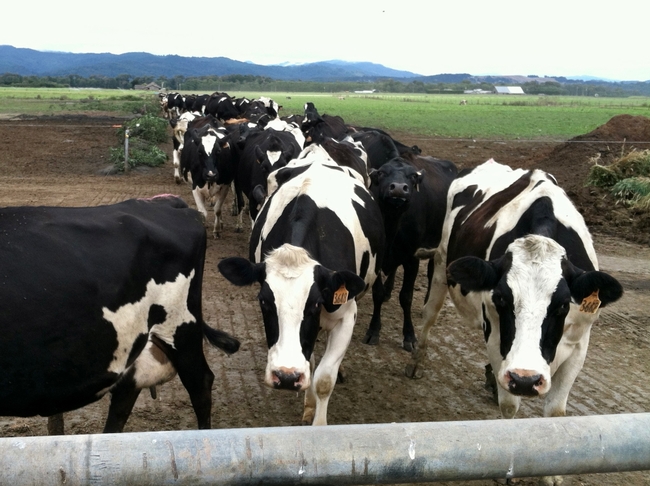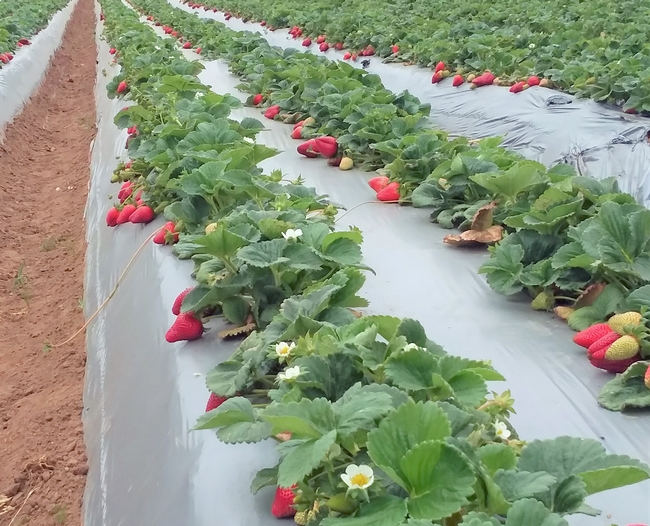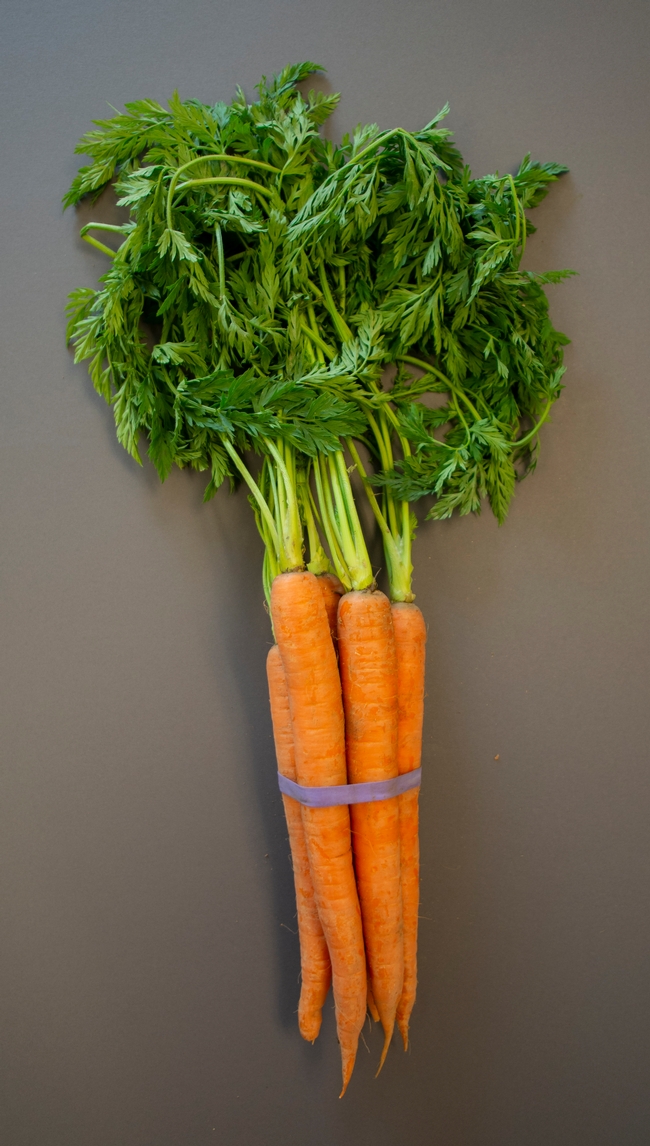Posts Tagged: Sumner
Report: California on path to significant dairy methane reduction
Researchers say dairy farms on track to achieve full 40% reduction goal by 2030
The California Dairy Research Foundation and University of California, Davis CLEAR Center announced on Dec. 14 the release of a new analysis of methane reduction progress titled "Meeting the Call: How California is Pioneering a Pathway to Significant Dairy Sector Methane Reduction." The paper, authored by researchers at UC Davis affiliated with UC Agriculture and Natural Resources, concludes that efforts are on track to achieve the state's world-leading target for reducing dairy methane emissions by 40% by 2030.
The report, written by distinguished professors of livestock emissions and agricultural economics, takes a comprehensive look at progress and projections, expanding upon the analysis of progress previously conducted by the California Air Resources Board. By documenting achievements to date, additional reduction efforts already funded, historic and current economic trends, and the projected availability of new solutions, the analysis lays out a workable path toward meeting California's goal. The pathway shows that California dairy farms are on track to achieve the full 40% dairy methane reduction goal and will reach “climate neutrality” by 2030. Climate neutrality is the point in which no additional warming is added to the atmosphere.
“This analysis shows that California's dairy sector is well on its way to achieving the target that was established by SB 1383 in 2016,” said CDRF's Executive Director Denise Mullinax. “With much important work still ahead, a clear understanding of this pathway helps dairy farmers, policy makers, researchers, and other partners make decisions to strategically press forward.”
The report outlines the need for continued implementation of California's four-part strategy for dairy methane reduction: farm efficiency and herd attrition, methane avoidance (alternative manure management), methane capture and utilization (digesters), and enteric methane reduction. Continued alignment of state and federal climate-smart agricultural approaches and incentives will also be critical to maintaining progress.
"Milk demand is growing, and California is among the world's low-cost suppliers of dairy products. It follows that effective California policy to reduce dairy greenhouse gas emissions must recognize that measures that cause milk production to exit the state do not mitigate global climate change," said study co-author Daniel Sumner, Distinguished Professor in the Department of Agriculture and Resource Economics at UC Davis. "Therefore, measures to help off-set mitigation costs, provide positive incentives for adoption of low-cost emission-reducing practices, and help stimulate innovation in methane reduction, are the economically efficient approaches."
The paper recognizes that enteric methane from the dairy and other livestock sectors is a significant source of greenhouse gas emissions in the U.S. and California. Several feed additives are expected to become commercially available in the next several years, which could be used to reduce enteric methane emissions from California's dairy herd.
“Adoption of enteric feed additives will become a valuable tool for dairy value chains to meet their greenhouse gas reduction goals,” said co-author and professor Ermias Kebreab, associate dean of global engagement and director of the World Food Center at UC Davis. “While this report provides only a broad overview of some of the most promising solutions, there is an incredible amount of research being conducted at UC Davis, nationally and internationally. The dairy industry, global food companies, state and federal agencies, and others continue to invest heavily in supporting enteric mitigation research efforts.”
The report finds that methane reductions from California's programs and projects in place today, coupled with the implementation of a moderate feed additive strategy to reduce enteric emissions, is on track to reduce between 7.61 to 10.59 million metric tons of methane (CO2e) by 2030, all from the dairy sector alone.
The collective investment in California's dairy methane reduction effort — from public and private funding — now exceeds $2 billion and counting. The California dairy sector, in coordination with the California Department of Food and Agriculture, was recently awarded up to $85 million by the United States Department of Agriculture under the Partnerships for Climate-Smart Commodities. The funding will leverage additional matching state funds and private capital investments, for a total of more than $300 million in new investment.
“It is important to highlight California's investments and success to date as an example of what is possible within the global livestock sector,” said co-author Frank Mitloehner, UC Davis animal science professor and air quality specialist in Cooperative Extension, and director of the UC Davis CLEAR Center. “California dairy farmers have demonstrated tremendous progress toward the state's methane reduction goal over the past several years. Given the short-lived nature of methane, this rapid reduction is an important contribution to the global effort to quickly limit climate warming.”
The author's analysis was prepared by Gladstein Neandross & Associates (GNA). Funding was provided by CDRF as part of its work to support an innovative and sustainable California dairy industry.
Drought pushes California farmers and ranchers to adapt to a drier future
Despite historic drought, farms and ranches may receive normal revenue
Despite recent rains, the 2020–21 drought has been unusually severe. Low precipitation, coupled with high evaporation has affected irrigated crops and livestock pastures. Yet California farmers and ranchers are adept at adapting. Despite record-setting drought conditions and hundreds of thousands of acres left unplanted, California farms and ranches, as a whole, may generate normal revenue in 2021, according to the authors of a new special issue of ARE Update focusing on the drought.
The 2020 water year (which ran from October 2019 through September 2020), was dry and hot in California, with the warmest April through September since 1895. It was followed by the third driest year since 1895 – receiving about half of the average 20th century rainfall. Consecutive years with record-setting warm, dry conditions have led to higher evaporative demand. Some regions, particularly the Sacramento Basin, have been hit especially hard by this ongoing drought.
California farmers have adapted to the resulting water shortages by transferring scarce irrigation water to crops that have a higher expected net revenue per drop of water, such as fresh produce and nuts, while leaving some fields unplanted. Due to decreased pasture forage, livestock producers have had to cull mature cows and ship more feeder cattle out of state.
“The dairy industry has had strong production and good revenue, but has faced high feed costs in 2021 that reduced net returns,” said special issue co-editor Daniel Sumner, UC Davis agricultural economist.
The drought's impact on farm revenues and prices in California has varied across crops and regions. Agricultural production on the coast (e.g., vegetables, berries and wine grapes), which accounts for 25% of farm output, is less likely to experience irrigation cutbacks during a drought. Consumers will notice few major price increases for California produce because farmers shifted water to these high-revenue crops in which California specializes.
The special issue on drought concludes with an explanation of policy changes that have improved the California water system in the past and envisions how policy changes might mitigate impacts of future droughts. Legislation such as the Sustainable Groundwater Management Act (SGMA) will facilitate adapting to new climate realities by incentivizing water trading and banking, which allow water users to better allocate water across space and time.
Most groundwater agencies are still assessing the best way to bring their overdrafted groundwater basins into compliance with SGMA, with almost 80% planning to recharge groundwater through increasing supply (e.g., recharge or surface water trading) rather than reducing water demand (e.g., pumping restrictions).
“No one single solution exists for California's water challenges, but there's a lot of potential to make improvements to the current system,” said Ellen Bruno, special issue co-editor and UC Berkeley agricultural economist. “Improving the allocation of water through various policy changes could help water users adapt to water scarcity.”
To learn more about the impact of the ongoing drought on California agriculture, read the full Special Issue of ARE Update 25(1), UC Giannini Foundation of Agricultural Economics, online at https://giannini.ucop.edu/publications/are-update.
ARE Update is a bimonthly magazine published by the Giannini Foundation of Agricultural Economics to educate policymakers and agribusiness professionals about new research or analysis of important topics in agricultural and resource economics. Articles are written by Giannini Foundation members, including University of California faculty and Cooperative Extension specialists in agricultural and resource economics, and university graduate students. Learn more about the Giannini Foundation and its publications at https://giannini.ucop.edu.
Californians will pay more for pork under Prop. 12
The Prop. 12 pork panic is overblown, say UC agricultural economists, but so are the new law's benefits to hogs
California's Proposition 12 will soon require farms to add space for certain farm animals, including breeding pigs, or mother sows. As the January 2022 date for full implementation of Prop. 12 approaches, some pundits warn of upcoming bacon shortages and up to 60% higher pork prices, while others downplay any negative effects on Californians.
What are the real impacts of Prop. 12, which was approved by California voters in 2018?
UC Davis economists estimate that California pork consumers will lose $320 million per year (roughly $8 per person) from the market impacts of Prop. 12. California consumers will pay about 8% more for pork regulated under Prop. 12 and will consume around 6% less of that pork per year.
Co-author Richard Sexton, UC Davis distinguished professor of agricultural and resource economics, noted, “The roughly 9% of North American sows affected will each get about 20% more housing space. But, the additional space will be for those sows that already have more space, not those confined in small individual stalls.”
California's Prop. 12 is now set to be implemented as planned following the 9th Circuit Court's recent rejection of legal challenges. Republican senators from Iowa have proposed federal legislation to stop implementation of Prop. 12, fearing economic damage to their hog farmers, but federal action is unlikely. Meanwhile, Prop. 12 supporters claim that the new regulations will give more space to sows confined to stalls so small that they can't turn around.
Prop. 12 requires each sow whose piglets are raised for uncooked cuts of pork sold in California – about 9% of North American sows – to have a minimum of 24 square feet of space. Because Prop. 12 applies only to sows, not to their offspring who are raised for meat, it will apply to well less than 1% of the 90 million North American hogs.
Around 30% of North American sows are already in group housing with 20 square feet each, rather than confined in stalls. The high cost of converting stalls means that the California pork supply will come from sows already in group housing. “Thus,” said Sexton, “the California Prop. 12 regulations will not help those sows confined in stalls to gain more space and mobility.”
The added costs of 20% more space for group-housed sows that are transitioned to comply with Prop. 12 – plus the costs of segregation, product tracing and new labeling – will cause the cost of regulated pork products in California to rise by about $0.25 per pound. The UC Davis research also indicates almost no change in the prices of pork products sold outside of California.
To learn more about the coming impact of Prop. 12 on California consumers and the North American pork supply chain, read the full article by Ph.D. candidateHanbin Lee, Sexton and distinguished professor Daniel A. Sumner, all in the UC Davis Department of Agricultural and Resource Economics: “Voter-Approved Proposition to Raise California Pork Prices.” ARE Update 24(6): 5–8. UC Giannini Foundation of Agricultural Economics: https://giannini.ucop.edu/filer/file/1629132628/20134.
ARE Update is a bimonthly magazine published by the Giannini Foundation of Agricultural Economics to educate policymakers and agribusiness professionals about new research or analysis of important topics in agricultural and resource economics. Articles are written by Giannini Foundation members, including University of California faculty and Cooperative Extension specialists in agricultural and resource economics, and university graduate students. Learn more about the Giannini Foundation and its publications at https://giannini.ucop.edu.
UC ANR scientists receive state cannabis research grants
Several scientists affiliated with the University of California Agriculture and Natural Resources have received grants from the California Bureau of Cannabis Control. The BCC awarded on Nov. 13 a total of $29,950,494 in public university research grants across California for research projects related to the implementation and effect of Proposition 64.
Research proposals had to fall within one of the several specified categories, including public health, criminal justice and public safety, economics, environmental impacts and the cannabis industry.
UC ANR-related cannabis projects and their principal investigators include:
Cannabis industry: Assessment of the location, structure, function, and demographics of licensed cannabis, focusing on geographical price differences, and differential impacts of local Prop 64-related regulations on the competitiveness of licensed businesses – Daniel Sumner, UC Davis professor in the Department of Agricultural and Resource Economics and director of the UC Agricultural Issues Center, $726,816
Economic impacts: Market prices for licensed and unlicensed cannabis and the effects of the current and alternate cannabis tax structures and tax rates on the private and public sectors in California, including government administrative costs and revenues - Sumner, $655,564
Environmental impacts of cannabis cultivation in California as affected by the farm economics of licensed and unlicensed cannabis production, including effects of testing regulations and compliance with the criminal prohibition of unlicensed cannabis - Sumner, $562,240
Assessing environmental impacts of cannabis-related noise and light disturbance to inform management of California wildlife – Justin Brashares, UC Berkeley professor in the Department of Environmental Science, Policy and Management, and Phoebe Parker Shames, graduate student, $489,762
Examining tribal sovereignty over cannabis permitting on native ancestral lands – Jennifer Sowerwine, UC Cooperative Extension specialist; Peter Nelson, professor; and Van Butsic, UC Cooperative Extension specialist; all in the UC Berkeley Department of Environmental Science, Policy and Management, $465,902
Cultivation bans, local control, and the effects and efficacy of Proposition 64 – Christy Getz, UC Cooperative Extension specialist in the UC Berkeley Department of Environmental Science, $328,916
Cannabis and wildfire: Current conditions, future threats, and solutions for farmers – Ted Grantham, UC Cooperative Extension specialist in the UC Berkeley Department of Environmental Science and Butsic, $319,091
Cannabis water-use impacts to streamflow and temperature in salmon-bearing streams – Mary Power, professor in the UC Berkeley Department of Integrative Biology, and Grantham, $314,417
The effect of local cannabis regulation on property prices – Butsic, $270,269
California cannabis workers: perceptions, beliefs, and knowledge of occupational health and industry hazards – Marc Schenker, professor in the UC Davis School of Medicine's Department of Public Health Sciences, $144,949
Related stories:
Cannabis Research Center at UC Berkeley https://rausser.berkeley.edu/news/2020/11/researchers-receive-grants-bureau-cannabis-control.
Cannabis and Hemp Research Center at UC Davis https://cannabis.ucdavis.edu/news/BCCawards
For a list of all public university projects funded by the Bureau of Cannabis Control, visit https://bcc.ca.gov/about_us/documents/media_20201113.pdf.
Organic agriculture tops $3 billion in California farm gate sales
Organic farming continues to expand in California and now includes more than 360 commodities, according to a new University of California report. The number of organic growers, acreage and farm gate sales revenue is reported by commodity, county, region and statewide in the new “Statistical Review of California Organic Agriculture, 2013-2016.” The data are collected from farms that register as organic with the California Department of Food and Agriculture.
“This report highlights the incredible diversity and abundance of organic crops being grown across so many different geographic regions in the state, which reflects California's leading role in this production sector,” said Houston Wilson, director of the new UC Organic Agriculture Institute.
“Dairies continue to lead by value of organic production,” said Rachael Goodhue, UC Davis professor of agricultural and resource economics and coauthor of the report.
The number of organic growers in California jumped from 2,089 in 2013 to 3,108 in 2016. The top 10 organic commodities for sales value in 2016 were cow milk, strawberries, carrots, wine grapes, table grapes, sweet potatoes, almonds, raspberries, salad mix, and chicken eggs.
“This review is critical to understand the changes in the fast-growing organic agriculture sector in the state where more than 50% of the nation's organic vegetables and fruits are produced,” said Joji Muramoto, UC Cooperative Extension organic production specialist at UC Santa Cruz and coauthor of the report. “It provides statistics of all organic commodities produced across the state as well as at county level. This is the primary reference to learn about the size, diversity, and trends of organic agriculture in the state.”
In 2016, California organic sales were $3.1 billion with an average of $1 million in sales per farm, but revenue varied widely among farms. For example, San Diego County had the most organic growers (313) in 2016, but Kern County's 47 organic farmers earned the most in total organic sales: $381 million on 49,727 acres, excluding pasture and rangeland, according to Muramoto.
“The average gross income of organic farms increased 14-fold from 1994 to 2016, reaching $1 million in 2016,” Muramoto said. “However, 77% of growers received less than $500,000 per year and 22% of growers who made $500,000 or more per year received 94% of the total gross sales, showing the income concentration among organic growers in the state.”
The statistical review of California's organic agriculture had been published since 1998 by the late Karen Klonsky, UC Cooperative Extension specialist, and her team after statistics for organic agriculture became available in 1992 as a result of the California Organic Food Act.
The last report published by Klonsky, who passed away in 2018, covered 2009-2012. All previous organic agriculture statistics reports can be accessed at https://aic.ucdavis.edu/research1/organic.html.
“This report of organic data continues the series of studies initiated by Karen Klonsky many years ago. It contains vital summary information for industry and policymakers as well as researchers,” said Goodhue.
Since the data collection began in 1994, the number of organic growers in California has increased 2.8-fold to 3,109 and the farm-level sales 40-fold to $3.1 billion in 2016.
“Accurate annual data on California organic crop production, acreage and value is critical to understanding the scale and scope of this growing agricultural sector,” said Wilson. “As the UC Organic Agriculture Institute begins to develop research and extension programs, it is important that we have a reliable way to assess the extent and geography of organic production as well as track changes over time.”
Muramoto, who became the UC Cooperative Extension organic production specialist in 2019, collaborated with Goodhue, Daniel Sumner, director of the UC Agricultural Issues Center and UC Davis professor of agricultural and resource economics; and UC Davis graduate student Hanlin Wei to produce the latest statistical review of California's organic agriculture.
More recent years are not included because the data collected by CDFA changed in 2017 and again in 2019 so they are not comparable to the data in this report. The full report can be downloaded from the UC Agricultural Issues Center website at https://aic.ucdavis.edu/2020/10/06/statistical-review-of-californias-organic-agriculture-by-wei-goodhue-muramoto-and-sumner.

